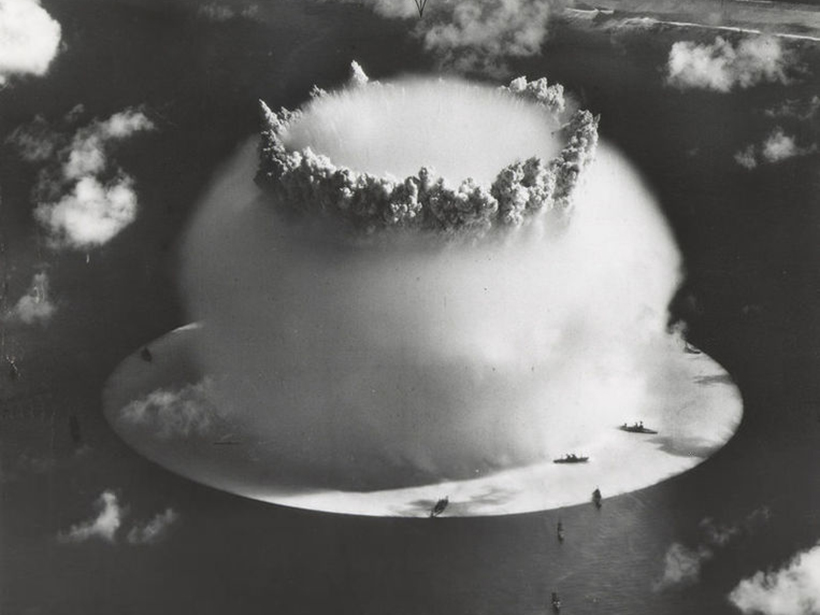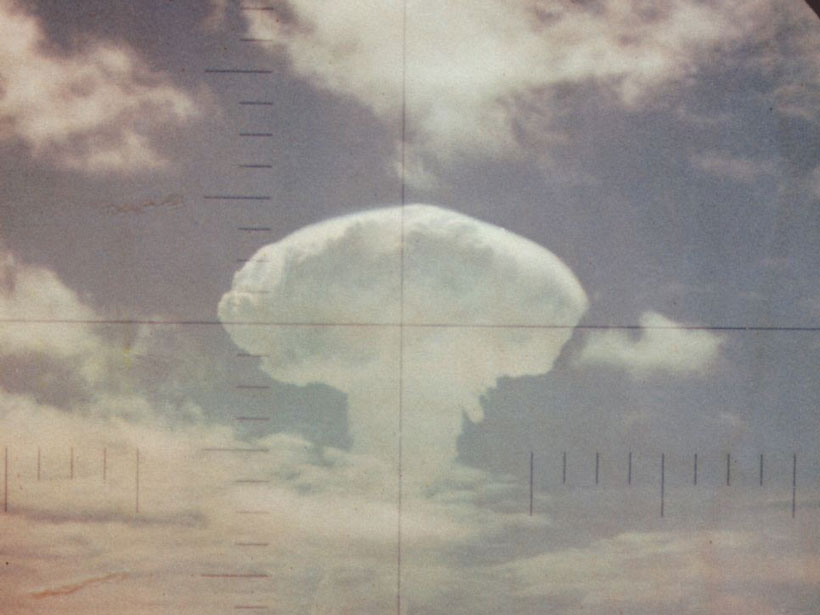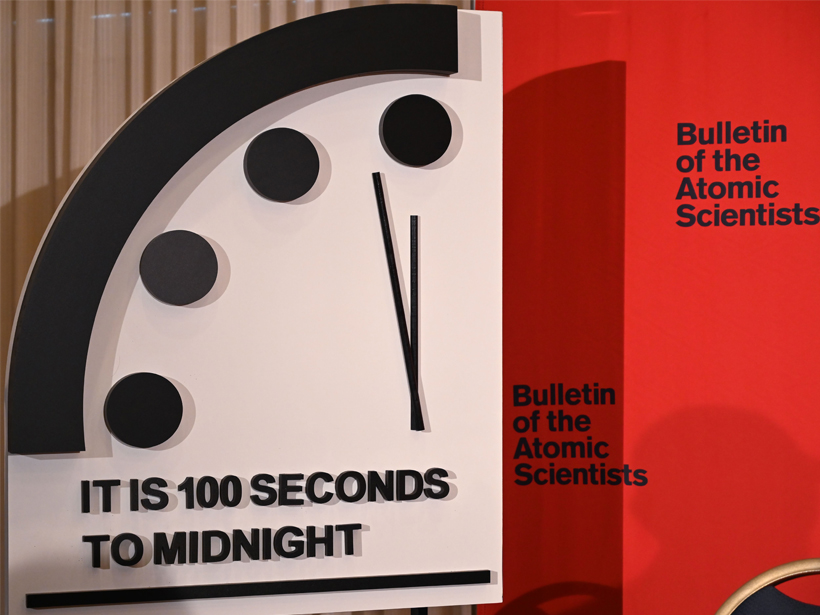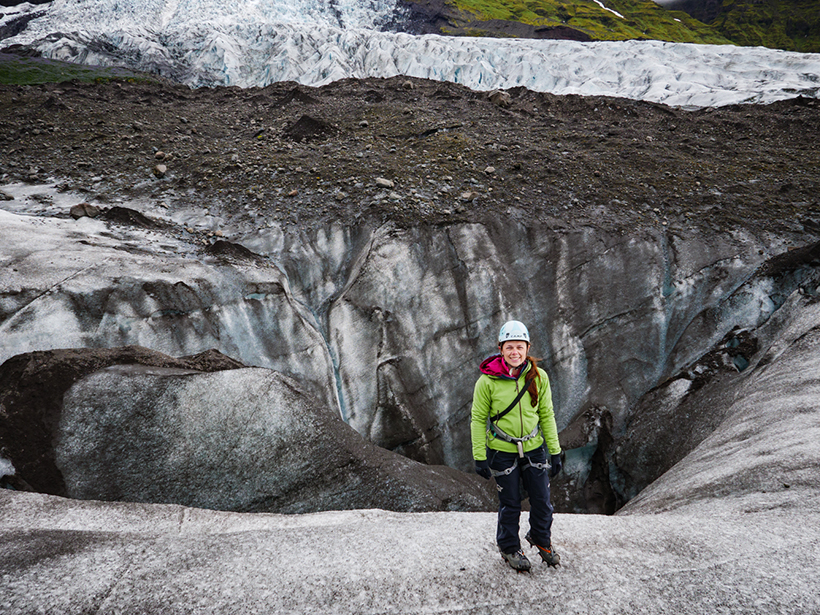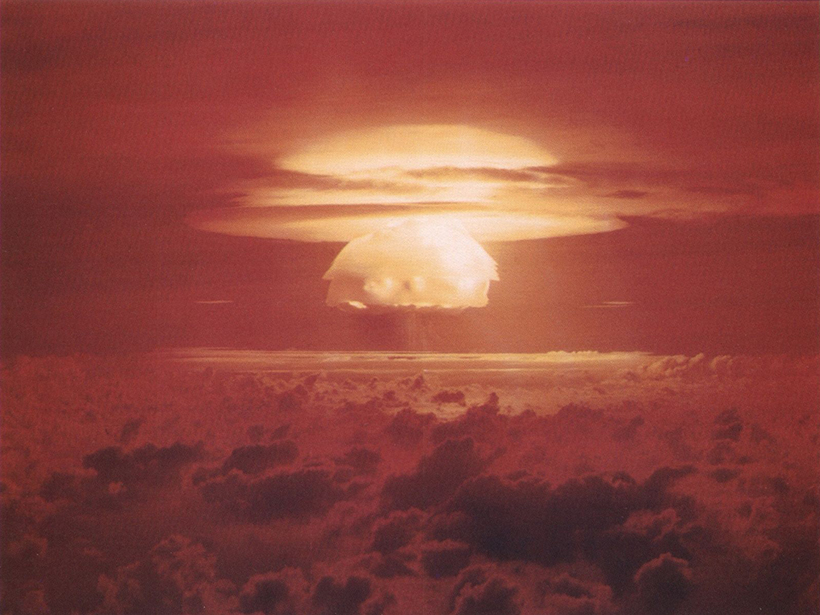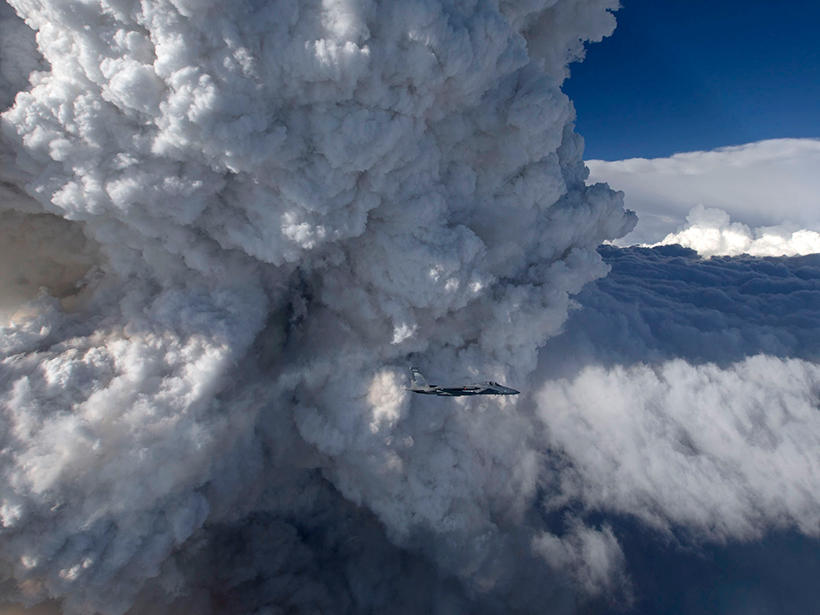Nuclear bomb tests conducted during the Cold War turned an idyllic tropical isle into a radioactive ship graveyard.
nuclear weaponry
Nuclear War Would Spawn a “Nuclear” El Niño
A jolt to the climate system provided by nuclear war could spur an El Niño like we’ve never seen before.
Doomsday Clock Ticks Closer to Midnight
The dual threats of nuclear warfare and climate change move the needle to 100 seconds to midnight.
Bikini Seafloor Hides Evidence of Nuclear Explosions
Seafloor mapping has revealed a crater and several shipwrecks persisting 73 years after the world’s first underwater nuclear test.
Podcast: A Nuclear Legacy Buried in Ice
The radioactive remains of nuclear testing during the Cold War and from nuclear disasters like Chernobyl are still with us and can be found in some of the remotest glaciers on Earth.
Could Seismic Networks Reveal Hard-to-Detect Nuclear Tests?
In the age of monitoring nuclear weapons testing, existing regional seismic networks may be a key to discovering small, undetected explosions around the world.
Nuclear Winter May Bring a Decade of Destruction
New climate models present a grim prediction of what would happen worldwide after a nuclear war between the United States and Russia.
Nuclear Bomb or Earthquake? Explosions Reveal the Differences
A series of controlled chemical detonations in the Nevada desert is helping researchers discern between ground shaking caused by nuclear explosions and earthquakes.
What Wildfire Smoke Tells Us About Nuclear Winter
A cloud of smoke from 2017 Canadian wildfires was so huge that it self-lofted and stayed in the atmosphere for 8 months. Scientists used it as an example for climate simulations of nuclear warfare.
Marshall Islands Nuclear Contamination Still Dangerously High
Today’s radiation levels at some locations were higher than in areas affected by the Chernobyl and Fukushima nuclear disasters.

